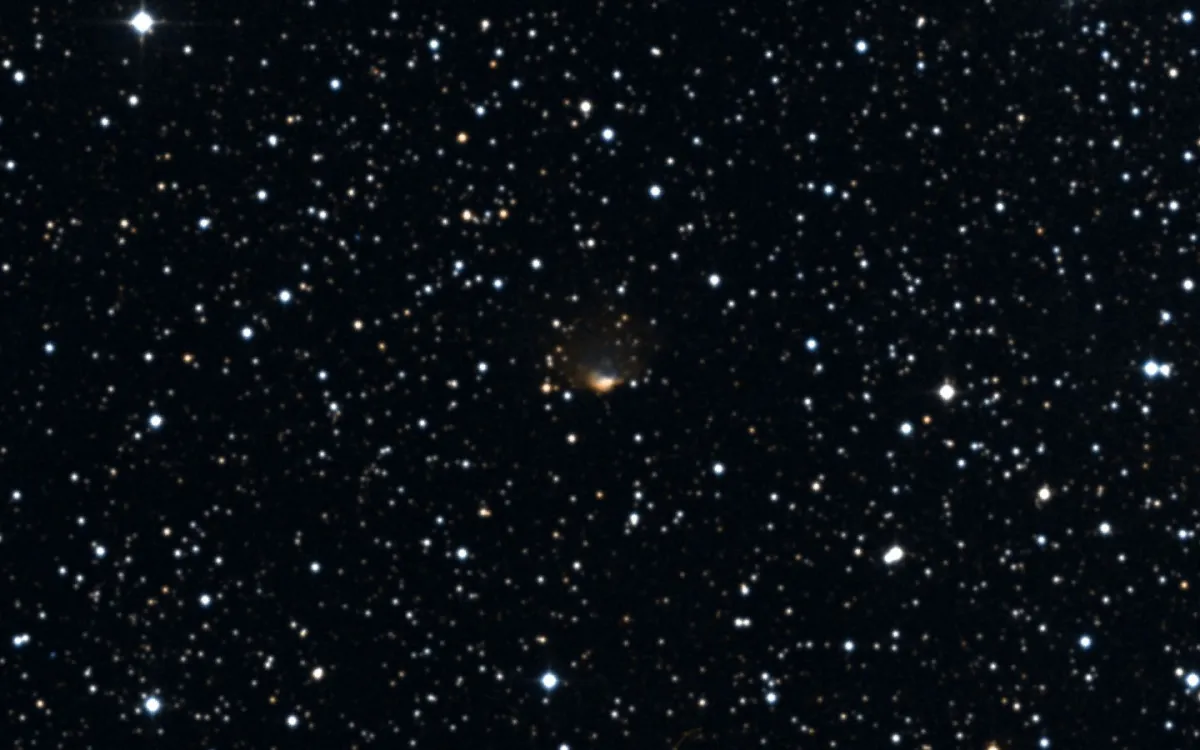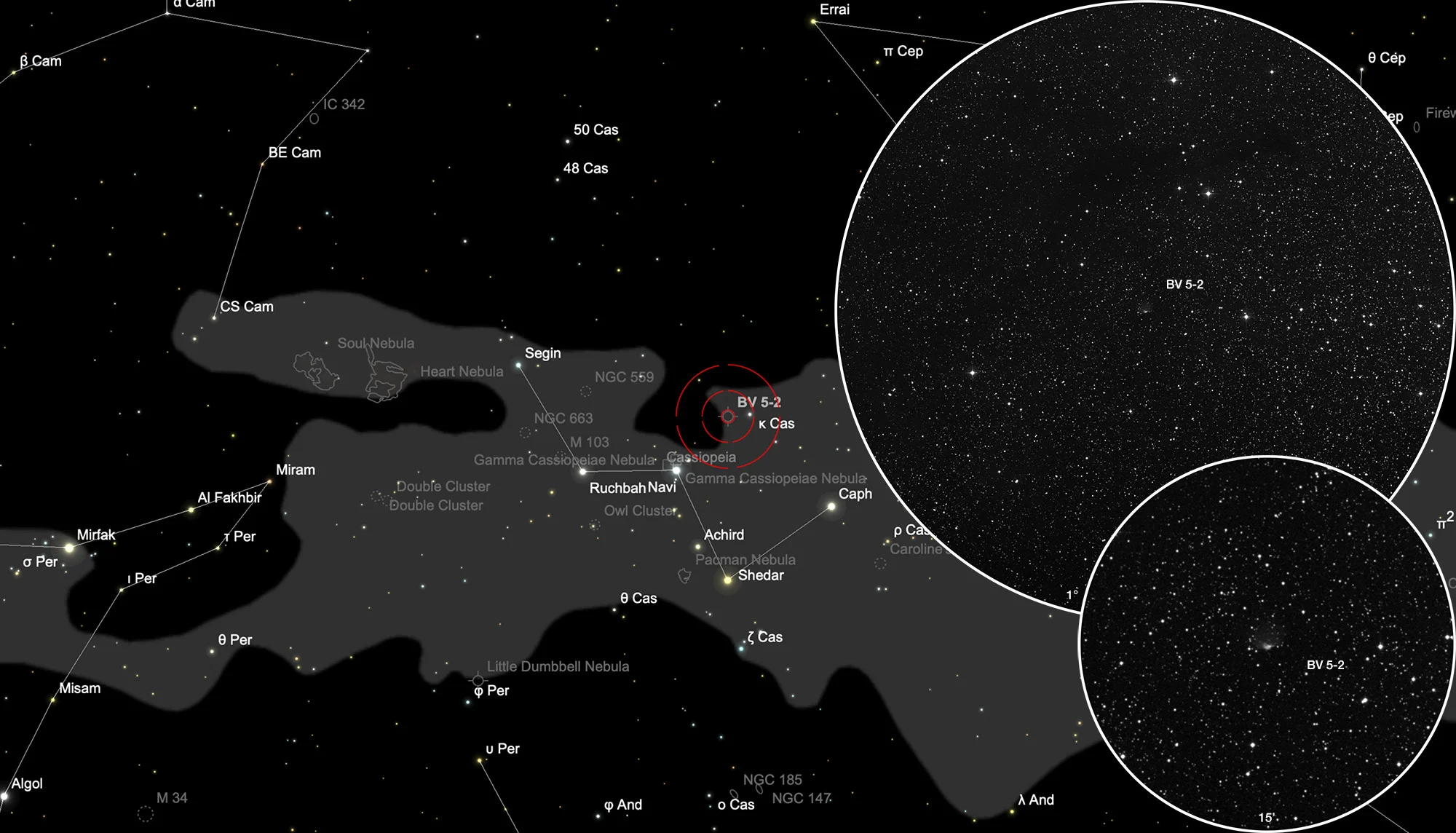Planetary Nebula BV 5-2

History
In 1956 the German-American astronomer Erika Böhm-Vitense discovered three new planetary nebulae during a study of extragalactic nebulae at Lick Observatory. This nebula here was the first listed in table V of her publication, hence the designations Böhm Vitense 5-2, BV 5-2, or also sometimes just BV 2. The other ones on this list were BV 5-1 and BV 5-3. [548]
In the late 1950-ies the American astronomer Stewart Sharpless discovered this nebula on the 48 inch Schmidt telescope photo plates of the «Palomar Observatory Sky Survey». He misidentified it as H-II region and listed it as number 179 (official designation Sh2-179) in his 1959 published catalogue of 313 H-II regions. [310]
Physical Properties
| Designations | PN G121.6-00.0: BV 5-2, PK 121+00.1, ARO 201, Sh 2-179 |
| Right Ascension (J2000.0) | 00h 40m 22s |
| Declination (J2000.0) | +62° 51' 17" |
| Dimensions | 40." : (optical) |
| Radial Velocity | -39.0 ± 25.0 km/s |
| Discoverer | BOHM-VITENSE 1956 |
Finder Chart
The planetary nebula Böhm-Vitense 5-2 can be found in the constellation Cassiopeia. On 5 October it is in opposition to the Sun and crosses the meridian at local midnight. The object is circumpolar, but from June to February it is highest in the sky and best for observing.
